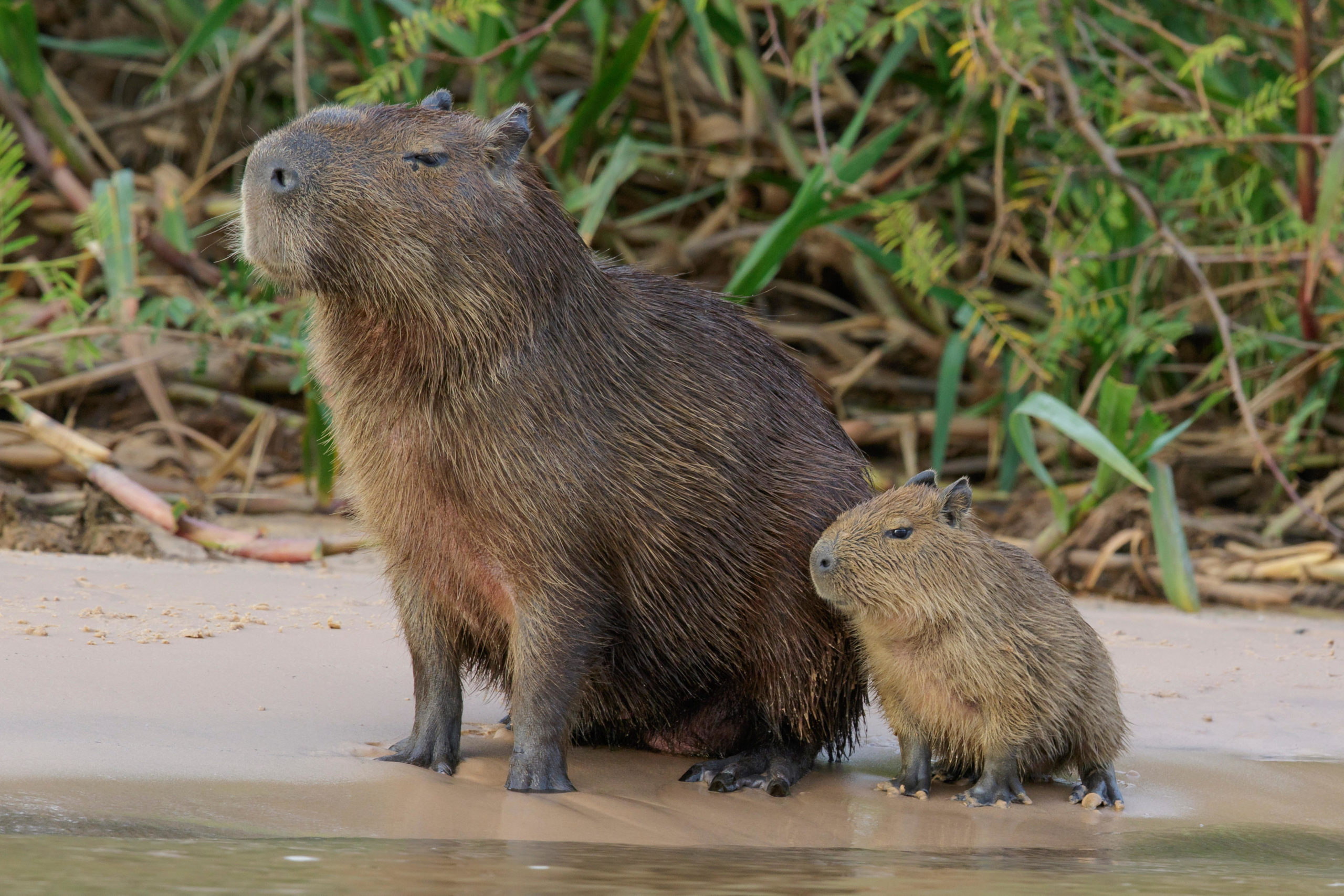Financial institutions are funding the destruction of nature that they themselves depend on. This means the financial sector has a unique and critical responsibility to measure its biodiversity-related risks as a first step to reducing them, and to curb an accelerating global biodiversity crisis.
The World Economic Forum estimates that one-third of the world’s US$90 trillion a year economy depends on the “ecosystem services” nature provides, from carbon sinks to the productivity of land and oceans in generating the food we eat.
As nature deteriorates, so does our access to its essential contribution to sustainable prosperity, in turn threatening exposed sectors of the economy, such as agriculture, mining and forestry, and their financial backers.
US$1.1 trillion
Development finance institutions are endangering nature with an expected value of US$1.1 trillion annually
A recent study by the Finance for Biodiversity Initiative (F4B) highlighted the nature dependency of the world’s development finance institutions. It found more than a quarter of their US$11.2 trillion loan book to be highly reliant on vulnerable ecosystems.
On the flip side of the same coin, F4B found the same banks were responsible for putting nature at risk. “Development finance institutions are endangering nature with an expected value of US$1.1 trillion annually,” commented Carlos Manuel Rodriguez, CEO of the Global Environment Facility (GEF) and former energy and environment minister of Costa Rica, at a recent global summit of public development banks, referring to the report.
In a similar study of private banks, the thinktank Portfolio Earth concluded their collective lending placed nature at risk to the tune of US$2.9 trillion.
Measuring our impacts on nature
Such findings point to the urgent need for private and public financial institutions to understand and better manage their dependency and impact on nature. As Elizabeth Maruma Mrema, executive secretary of the UN Convention on Biodiversity (CBD), said at the same global summit of development banks: “The financial sector, and in particular the public development banks, have a key role to play in the transformation of economic sectors, by financing biodiversity-positive, friendly economies.”
Some financial institutions are making progress on this front, such as a coalition of French asset managers which has commissioned research to measure the impact of their investments on biodiversity. Moreover, some financial regulators are getting in on the act, led by the Dutch central bank, De Nederlandsche Bank, which has undertaken the world’s first biodiversity-linked analysis of financial stability. The European Commission’s financial division, FISMA (Financial Stability, Financial Services and Capital Markets Union), has initiated work on a biodiversity taxonomy that could be used in setting future standards, particularly on corporate disclosure.
To ramp up the speed, ambition and coherence of such efforts, a group of more than 60 financial institutions working with environmental and international organisations and several governments has established a Task Force on Nature-related Financial Disclosure (TNFD).
The goal of the TNFD is to make nature count in financial decision-making, by developing and catalysing financial sector adoption of appropriate principles, frameworks, tools, metrics and data. It will help to build the foundations for a more robust, standardised and scalable approach to understanding and reporting on finance-related nature risks.
By helping increase disclosure of biodiversity risks, the TNFD will help shift capital away from biodiversity loss, and towards restoring and conserving nature’s priceless benefits to us.
The TNFD builds on the experience of its older, sister initiative, the Task Force on Climate-related Financial Disclosure (TCFD), which was established under the Financial Stability Board, a group of central banks set up by the G20.
Counting nature requires extensive, exhaustive work. But making nature count is a keystone in safeguarding nature and the ecosystem services we draw from it.
Science tells us that there is considerable overlap between climate and nature drivers, risks and impacts. “Strengthening Synergies”, a recent study by the UN Environment Programme World Conservation Monitoring Centre, argued that conserving 30% of land in strategic locations could safeguard 500 billion tonnes of carbon stored in vegetation and soils, an order of magnitude greater than annual greenhouse gas emissions today, and reduce the extinction risk of nearly nine out of 10 threatened terrestrial species.
As a result, some of the frameworks, standards and metrics that financial institutions can use to manage nature are similar to those they use to manage climate risk, as pointed out in a recent study by Global Canopy and Vivid Economics, “The Case for a Task Force on Nature-related Financial Disclosures”.
But there are key differences in how financial institutions must deal with climate change and nature need. For example, climate risks to investors can be more easily measured, via such things as physical risk, tonnes of carbon emitted and the carbon intensity of investment portfolios. Similar metrics are difficult to establish for nature, as it covers everything from oceans to forests and wetlands, minerals and wildlife. Nature data sources are often public not private, unlike much climate data. This creates new opportunities for ensuring public and policy oversight, and challenges in translating public scientific data into information relevant to the corporate and financial communities.
The various institutions participating in the TNFD have agreed to establish a Technical Expert Group to support the initial TNFD-linked work. The group will convene and collate leading science, data, standards and finance experts and institutions, from countries including Brazil, China and South Africa, as well as from Europe and North America.
Drawing on these wide-ranging sources, the Technical Expert Group is working with participating financial institutions to define the TNFD’s scope. It will attempt to resolve questions such as whether the TNFD should go beyond the TCFD’s scope in considering public as well as private financial flows, and if it should consider the impact of financial decision-making on nature, as well as financial risks.
Counting nature requires extensive, exhaustive work. But making nature count is a keystone in safeguarding nature and the ecosystem services we draw from it. Getting this right, soon, is essential, as it will shape nature outcomes in multiple ways, increasing public awareness and citizens’ actions, informing policies, regulations and standards, and guiding individual financial decisions.









